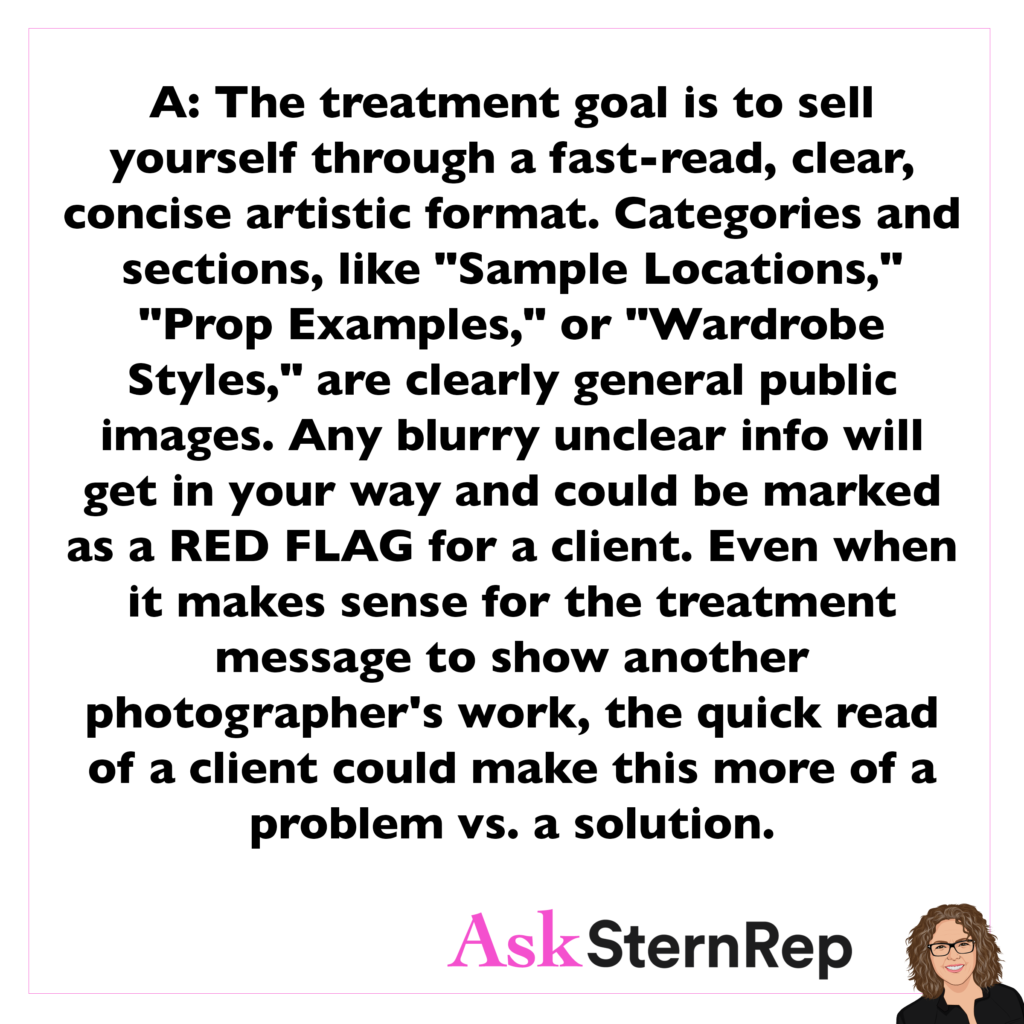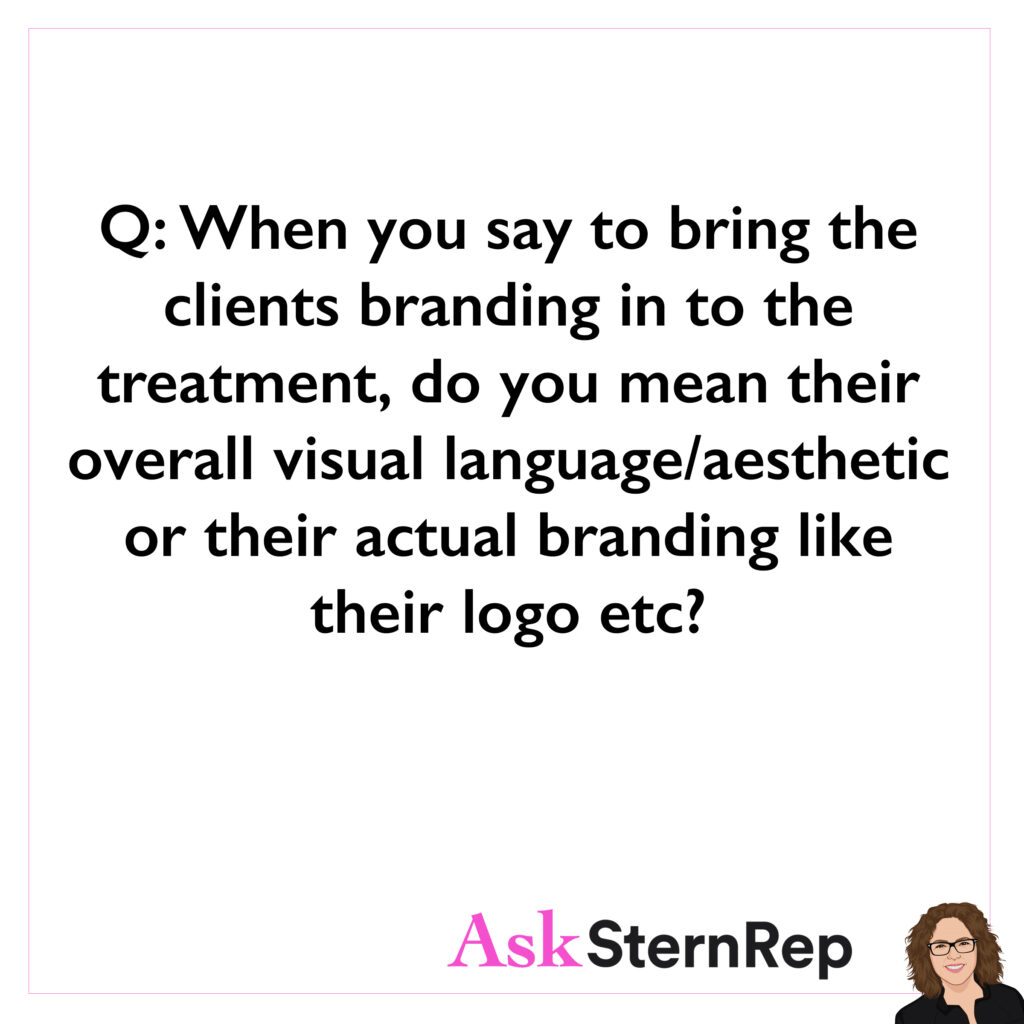

Q:
I would like to hear about the importance of treatments. What is a treatment?
Do photographers create their own treatment? What needs to go into it and what should it look like?
A:
A great treatment is one of 3 keys the photographer needs to get the job:
1. The Portfolio
2. Creative Call
3. The Treatment
A treatment is a pdf full of all the info to show the creative how the photographer will approach the job. It will include samples of images, locations, talent, wardrobe, etc.
Yes, photographers create their own treatment, and I have to say it’s like getting their teeth pulled. They are not writers and normally their portfolio speaks for them. This takes a sales type of “showing off” that photographers are uncomfortable with in general.
It needs to look slick and put together because the creative will read this to know what the photographer is bringing to the project, how they work, how they see this job, and how well they can deliver a packaged expression of their work.








